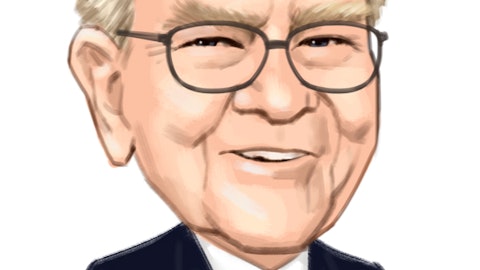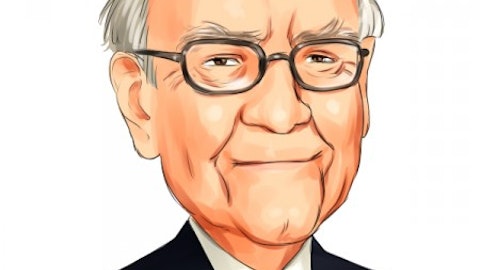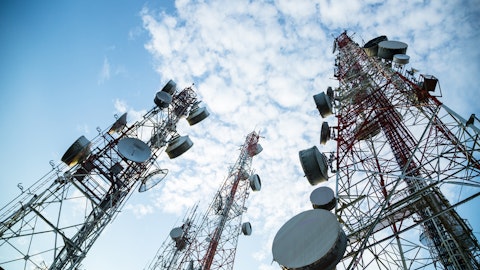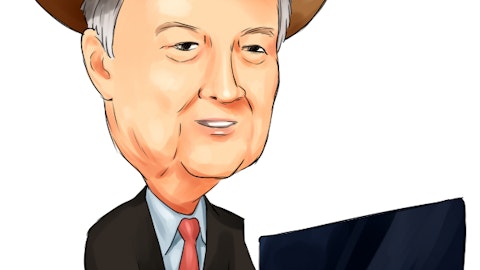#2 Procter & Gamble Co (NYSE:PG)
Procter & Gamble Co (NYSE:PG) was founded in 1837. Warren Buffett developed a large stake in the company indirectly. Here’s how:
In 1989 Warren Buffett purchased a large amount of Gillette stock. In 2005 Gillette was acquired by Procter & Gamble. This gave Buffett a large stake in Procter & Gamble.
Like Coca-Cola, Procter & Gamble is a Dividend Kings. The company has increased its dividend payments for 59 consecutive years.
The company is the second largest consumer products corporation in the world. Only Apple has a larger (much larger) market cap than Procter and Gamble. The company currently has a $219 billion market cap; the 13thlargest in the world.
Procter & Gamble has 21 brands that generate more than $1 billion a year in sales – 1 more than Coca-Cola.
The image below shows Procter & Gamble’s key brands:

Source: Procter & Gamble 2015 Shareholder Meeting Presentation, slide 19
Procter & Gamble’s competitive advantage is similar to Coca-Cola’s. The company sells branded products that are disposable, reusable, and exist in slow changing industries.
There is just not much room for disruptive innovation in the paper towel (Bounty), toilet paper (Charmin), fabric care (Tide), toothpaste (Crest), or toothbrush (Oral-B) industries.
This slow change allows Procter & Gamble to invest heavily in brand building. The company spends between $8 billion and $9 billion a year on advertising – between 11% and 13% of revenues a year. Another way to look at this is that Procter & Gamble reinvests about 50% of its profits before advertising costs back into advertising to build its brands.
This strategy is not without its pitfalls.
Procter & Gamble Co (NYSE:PG) has experienced excellent growth over the long run, but has struggled in recent years.
– 1999 through 2008: Earnings-per-share growth of 10.3% a year
– 2009 through 2015: Earnings-per-share growth of 2.0% a year
The company’s sluggish growth recently is a result of over-diversifying. The company acquired too many brands, spreading managerial focus (and advertising budget) to thin. This has resulted in poor earnings growth.
The company has since corrected course by divesting its non-core brands. The new Procter & Gamble is a leaner, more focused company. Results are following. Procter & Gamble saw constant-currency adjusted earnings-per-share grow 9% in its most recent quarter versus the same quarter a year ago.
It is likely that Procter & Gamble continues to compound earnings-per-share at 7% to 9% a year going forward. The company can manage this level of growth through:
– Sales growth of 3% to 4% a year
– Share repurchases of 2% a year
– Margin improvements of 2% to 3 a year
Advertising and continued global expansion and rising GDP (over the long run) in emerging markets will help Procter & Gamble to hit its sales growth targets.
The company regularly uses excess cash to repurchase shares; Procter & Gamble returns around 100% of its earnings to shareholders through dividends and share repurchases.
Margin improvements will be generated through continued cost cutting and a greater focus on efficiency. Margin improvements are one of the key drivers behind the company’s 9% constant currency earnings-per-share growth in its most recent quarter.
Earnings-per-share growth of 7% to 9% a year combined with Procter & Gamble’s current 3.3% dividend yield gives investors in this relatively low risk company expected total returns of 10% to 12% per year.
The company’s growth will likely be slower over the next year due to the global growth slowdown. The strong United States dollar in particular is having negative effects on Procter & Gamble. On the plus side, low oil prices do provide lower input costs for Procter & Gamble, slightly improving margins.
Procter & Gamble is currently trading for an adjusted price-to-earnings ratio of 20.6. The company is likely trading around fair value at this time given its above-average expected total returns and safety.
A total of 52 funds from the Insider Monkey database held around $8.99 billion worth of Procter & Gamble’s stock at the end of December, versus 58 funds with stakes worth $9.06 billion a quarter earlier. Another shareholder of Procter & Gamble is Yacktman Asset Management, which owns 21.86 million shares, according to its latest 13F filing.





